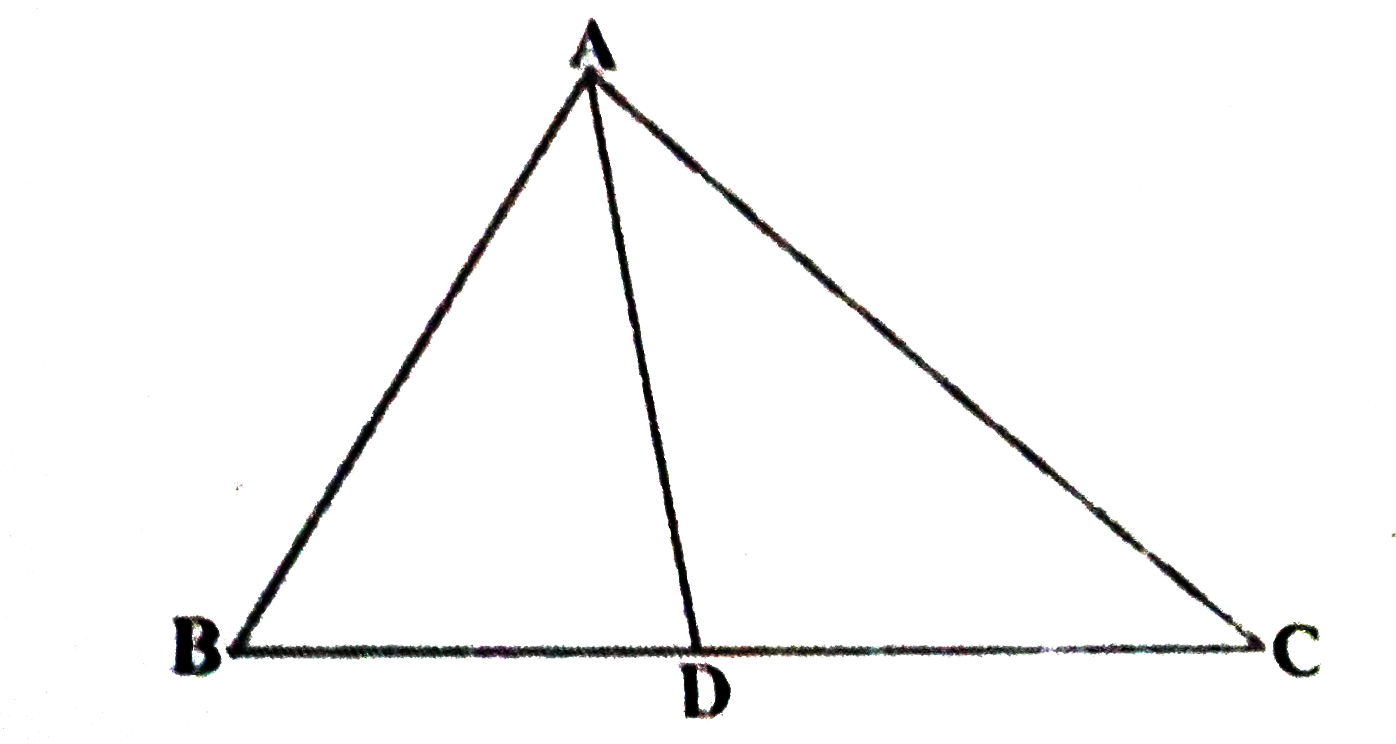In a ΔABC∑(b+c)tanA2tan(B−C2)=
a
b
c
0
The correct Answer is:D
To solve the problem given in the triangle ΔABC, we need to evaluate the expression:
∑(b+c)tan(A2)tan(B−C2)
1. Understanding the Expression:
We start with the expression (b+c)tan(A2)tan(B−C2). Here, A,B,C are the angles of the triangle opposite to the sides a,b,c respectively.
2. Using the Identity for tan(B−C2)</strong>:Wecanrewrite \tan\left(\frac{B-C}{2}\right) usingtheidentity:
\tan\left(\frac{B-C}{2}\right) = \frac{\tan\left(\frac{B}{2}\right) - \tan\left(\frac{C}{2}\right)}{1 + \tan\left(\frac{B}{2}\right) \tan\left(\frac{C}{2}\right)}
However,forourpurpose,wecanalsoexpressitas:
\tan\left(\frac{B-C}{2}\right) = \frac{b-c}{b+c} \cot\left(\frac{A}{2}\right)
</p><p>3.<strong>SubstitutingBackintotheExpression</strong>:Substitutethisbackintotheexpression:
(b+c) \tan\left(\frac{A}{2}\right) \cdot \frac{b-c}{b+c} \cot\left(\frac{A}{2}\right)
Here, (b+c) cancelsout:
= (b-c) \tan\left(\frac{A}{2}\right) \cot\left(\frac{A}{2}\right)
</p><p>4.<strong>UsingtheIdentity \tan x \cot x = 1 </strong>:Since \tan\left(\frac{A}{2}\right) \cot\left(\frac{A}{2}\right) = 1 :
= (b-c)
</p><p>5.<strong>RepeatingforOtherAngles</strong>:Werepeatthisprocessfortheotherangles B and C :−For B : (c-a) −For C : (a-b) </p><p>6.<strong>SummingUp</strong>:Nowwesumtheseresults:
(b-c) + (c-a) + (a-b)
</p><p>7.<strong>SimplifyingtheSum</strong>:Whenwesimplifythis:
= b - c + c - a + a - b = 0
</p><p><strong>FinalAnswer:</strong>Thus,thefinalansweris:
\sum (b+c) \tan\left(\frac{A}{2}\right) \tan\left(\frac{B-C}{2}\right) = 0
We start with the expression (b+c)tan(A2)tan(B−C2). Here, A,B,C are the angles of the triangle opposite to the sides a,b,c respectively.
\tan\left(\frac{B-C}{2}\right) = \frac{\tan\left(\frac{B}{2}\right) - \tan\left(\frac{C}{2}\right)}{1 + \tan\left(\frac{B}{2}\right) \tan\left(\frac{C}{2}\right)}
However,forourpurpose,wecanalsoexpressitas:
\tan\left(\frac{B-C}{2}\right) = \frac{b-c}{b+c} \cot\left(\frac{A}{2}\right)
</p><p>3.<strong>SubstitutingBackintotheExpression</strong>:Substitutethisbackintotheexpression:
(b+c) \tan\left(\frac{A}{2}\right) \cdot \frac{b-c}{b+c} \cot\left(\frac{A}{2}\right)
Here, (b+c) cancelsout:
= (b-c) \tan\left(\frac{A}{2}\right) \cot\left(\frac{A}{2}\right)
</p><p>4.<strong>UsingtheIdentity \tan x \cot x = 1 </strong>:Since \tan\left(\frac{A}{2}\right) \cot\left(\frac{A}{2}\right) = 1 :
= (b-c)
</p><p>5.<strong>RepeatingforOtherAngles</strong>:Werepeatthisprocessfortheotherangles B and C :−For B : (c-a) −For C : (a-b) </p><p>6.<strong>SummingUp</strong>:Nowwesumtheseresults:
(b-c) + (c-a) + (a-b)
</p><p>7.<strong>SimplifyingtheSum</strong>:Whenwesimplifythis:
= b - c + c - a + a - b = 0
</p><p><strong>FinalAnswer:</strong>Thus,thefinalansweris:
\sum (b+c) \tan\left(\frac{A}{2}\right) \tan\left(\frac{B-C}{2}\right) = 0
Topper's Solved these Questions
- PROPERTIES OF TRIANGLES AND CIRCLES CONNECTED WITH THEMBOOK - OBJECTIVE RD SHARMA ENGLISHCHAPTER - PROPERTIES OF TRIANGLES AND CIRCLES CONNECTED WITH THEMEXERCISE - Exercise
97 Videos
- PLANE AND STRAIGHT LINE IN SPACE BOOK - OBJECTIVE RD SHARMA ENGLISHCHAPTER - PLANE AND STRAIGHT LINE IN SPACE EXERCISE - Chapter Test
31 Videos
- REAL FUNCTIONS BOOK - OBJECTIVE RD SHARMA ENGLISHCHAPTER - REAL FUNCTIONS EXERCISE - Chapter Test
58 Videos
Similar Questions
In ΔABC,(a+b+c)(tan(A2)+tan(B2))=
View SolutionIn a ΔABC prove that tan(A+B2)=cot(C2)
View Solution. In a ΔABC,Iftan(A2),tan(B2),tan(C2), are in H.P.,then a,b,c are in
View SolutionIn a ΔABC prove that cos(A+B2)=sin(C2).
View SolutionIn ΔABCiftan(A2)tan(B2)+tan(B2)tan(C2)=23 then a+c
View SolutionStatement-1: In a !ABC,
(a+b+c)(tanA2+tanB2)=2ccotC2
Statement-2: In a !ABC, a = b cos C + c cos B
View SolutionIn any ΔABC,∑a(sinB−sinC)= (a) a2+b2+c2 (b) a2 (c) b2 (d) 0
View SolutionIn a ΔABC,11+tan2(A2)+11+tan2(B2)+11+tan2(C2)=k[1+sin(A2)sin(B2)sin(C2)], then the value of k is
View SolutionIn any ΔABC, prove that
(i) tanB−C2=b−cb+ccotA2.
(ii) If ∠B=90∘, prove that tan(A2)=√(b−cb+c).
(iii) If ∠C=90∘, prove that tan(A−B2)tan(A+B2)=a−ba+b.
View SolutionIn figure D is a point on side BC of a ΔABCsuch that BDCD=ABAC. Prove that AD is the bisector of ∠BAC.

View Solution
